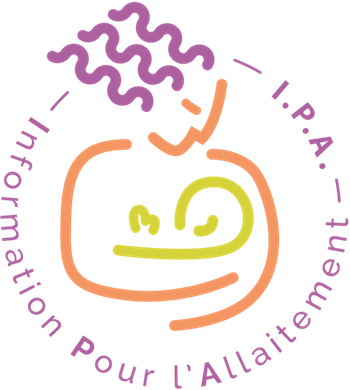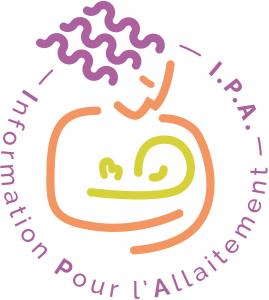Catégories
 > Pratique de l'allaitement > Durée d'allaitement et tétée > Démarrage de l'allaitement > Pratique de l'allaitement > Durée d'allaitement et tétée > Démarrage de l'allaitement
Démarrage de l'allaitementSynonyme(s)Début de l'allaitementVoir aussi |
Documents disponibles dans cette catégorie (181)
Ajouter le résultat dans votre panier Faire une suggestion Affiner la recherche
Article : texte imprimé
Heather L. Sipsma, Auteur ; Krista L. Jones, Auteur ; Heather Cole-Lewis, Auteur |Despite growing evidence of the benefits of breastfeeding, rates of breastfeeding remain disproportionately low among adolescent mothers compared with older mothers in the United States. Current interventions primarily target adult women, and li[...]Article : texte imprimé
Frederick Friedman, Jr, Auteur ; Lynda Adrouche-Amrani, Auteur ; Ian R. Holzman, Auteur |Sudden unexpected neonatal collapse in the delivery room is a rare occurrence in healthy term infants. Upper airway obstruction may occur from improper positioning of the newborn even while breastfeeding. Such occlusion may have dire consequence[...]Article : texte imprimé
Aza Sherin Mohamad Yusuff, Auteur ; Li Tang, Auteur ; Colin W. Binns, Auteur |Background: Postnatal depression is a disorder that can lead to serious consequences for both the mother and infant. Despite the extensively documented health benefits of breastfeeding, its association with postnatal depression remains uncertai[...]Article : texte imprimé
Kristen Mitchell-Box, Auteur ; Kathryn L. Braun, Auteur ; Eric L. Hurwitz, Auteur |Breastfeeding is considered the best infant feeding method, yet initiation and duration rates in the United States are lower than recommended by medical and public health professionals. Positive attitudes toward breastfeeding of the male partner[...]Article : texte imprimé
Erin McElderry Bascom, Auteur ; Melissa A. Napolitano, Auteur |Background: Although postpartum depression is associated with lower breastfeeding initiation rates and shorter breastfeeding duration, the potential mechanisms through which this relationship functions are not well understood. Objective: Th[...]Article : texte imprimé
Deborah J. Gregg, Auteur ; Megan Prokorym, Auteur ; Barbara A. Dennison, Auteur |Background: Primary care providers play an important role in encouraging and counseling pregnant and postpartum women to successfully breastfeed. Objective: One objective of this 1-year grant was to establish the Breastfeeding Friendly Prac[...]Article : texte imprimé
Vanessa Simas Braga, Auteur ; Márcia Regina Vítolo, Auteur ; Paulo Floriani Kramer, Auteur |Objective: To investigate risk factors for pacifier use in the first year of life. Materials and Methods: A prospective cohort study was conducted with children enrolled at birth in Porto Alegre, Southern Brazil, whose mothers underwent prena[...]Article : texte imprimé
Leandro Cordero, Auteur ; Reena Oza-Franck, Auteur ; Mark B. Landon, Auteur |Background: Women who are overweight or obese are at risk for maternal and neonatal medical complications, including macrosomia (birth weight ≥4,000 g), that may contribute to breastfeeding initiation failure. This study examined fac[...]Article : texte imprimé
RO Meyerink, Auteur ; GS Marquis, Auteur |To gain perspective on breastfeeding initiation and duration among poor women in the south-eastern United States, the authors interviewed a random sample of 150 mothers (93% African American) at a county health clinic in Birmingham, Alabama. For[...]Article : texte imprimé
Danielle R. Stevens, Auteur ; Sarah N. Taylor, Auteur ; Brian Neelon, Auteur ; Roger B. Newman, Auteur ; James R. Roberts, Auteur |Introduction: The health benefits of breastfeeding for both the mother and her offspring are well established, and breastfeeding may be especially important for mitigating negative health effects of pregnancy complicated by diabetes. Objectiv[...]Article : texte imprimé
Jordyn T. Wallenborn, Auteur ; Whitney C. Graves, Auteur ; Saba W. Masho, Auteur |Background: Approximately 90% of mothers with a primary C-section have a subsequent C-section. To date, research has demonstrated that primary C-sections are associated with breastfeeding noninitiation. However, it is unknown if this association[...]Article : texte imprimé
Sharon M. Karp, Auteur ; Abigail Howe-Heyman, Auteur ; Mary S. Dietrich, Auteur |Objective: This secondary analysis examined breastfeeding initiation rates and factors related to initiation in a sample of multiparous women with a history of a prior preterm birth. Subjects and Methods: Data for a subsample of women (n=130)[...]Article : texte imprimé
Nicole Yonke, Auteur ; Rebekah Maston, Auteur |Background: Women taking methadone or buprenorphine are encouraged to breastfeed if stable without polysubstance use. Research Aim: We aimed to determine the difference between stated intention to breastfeed prenatally in women taking metha[...]Article : texte imprimé
J Ingram, Auteur ; Mike W. Woolridge, Auteur ; R Greenwood, Auteur |Mothers who experience breastfeeding difficulties with their first babies and give up breastfeeding are less likely to breastfeed subsequent babies than mothers who do not experience such difficulties. We carried out a longitudinal study of 22 m[...]Article : texte imprimé
Nicole Yonke, Auteur ; Elizabeth Yakes Jimenez, Auteur ; Lawrence Leeman, Auteur ; Yuridia Leyva, Auteur ; Alyssa Ortega, Auteur ; Ludmila Bakhireva, Auteur |Background: Women with opioid use disorder (OUD) are encouraged to breastfeed, but have lower breastfeeding rates than the general population. Objective: We examined self-reported barriers and motivators for breastfeeding in women with OUD an[...]


















